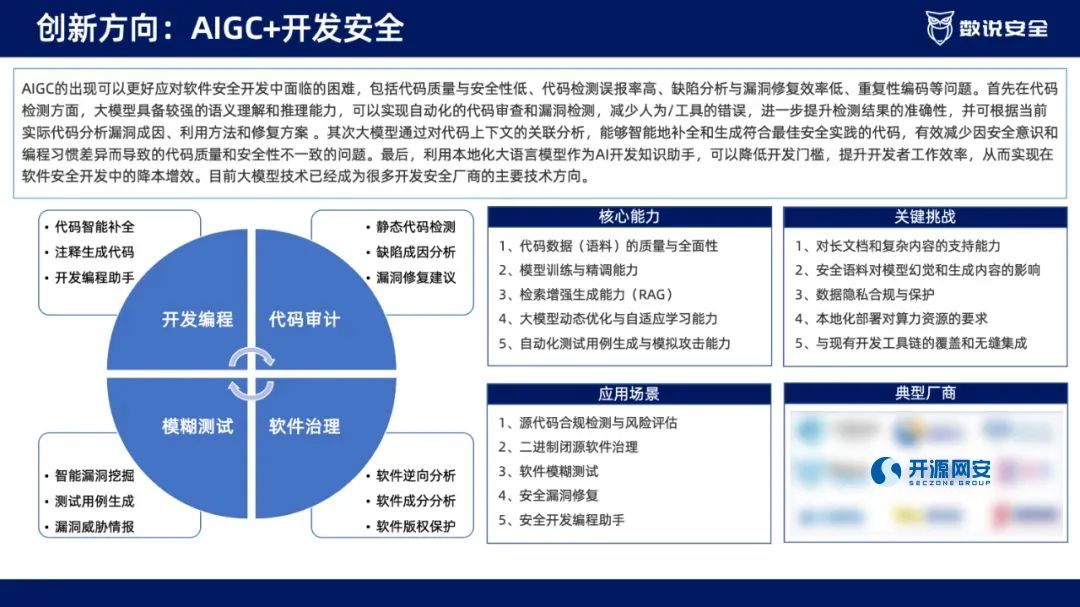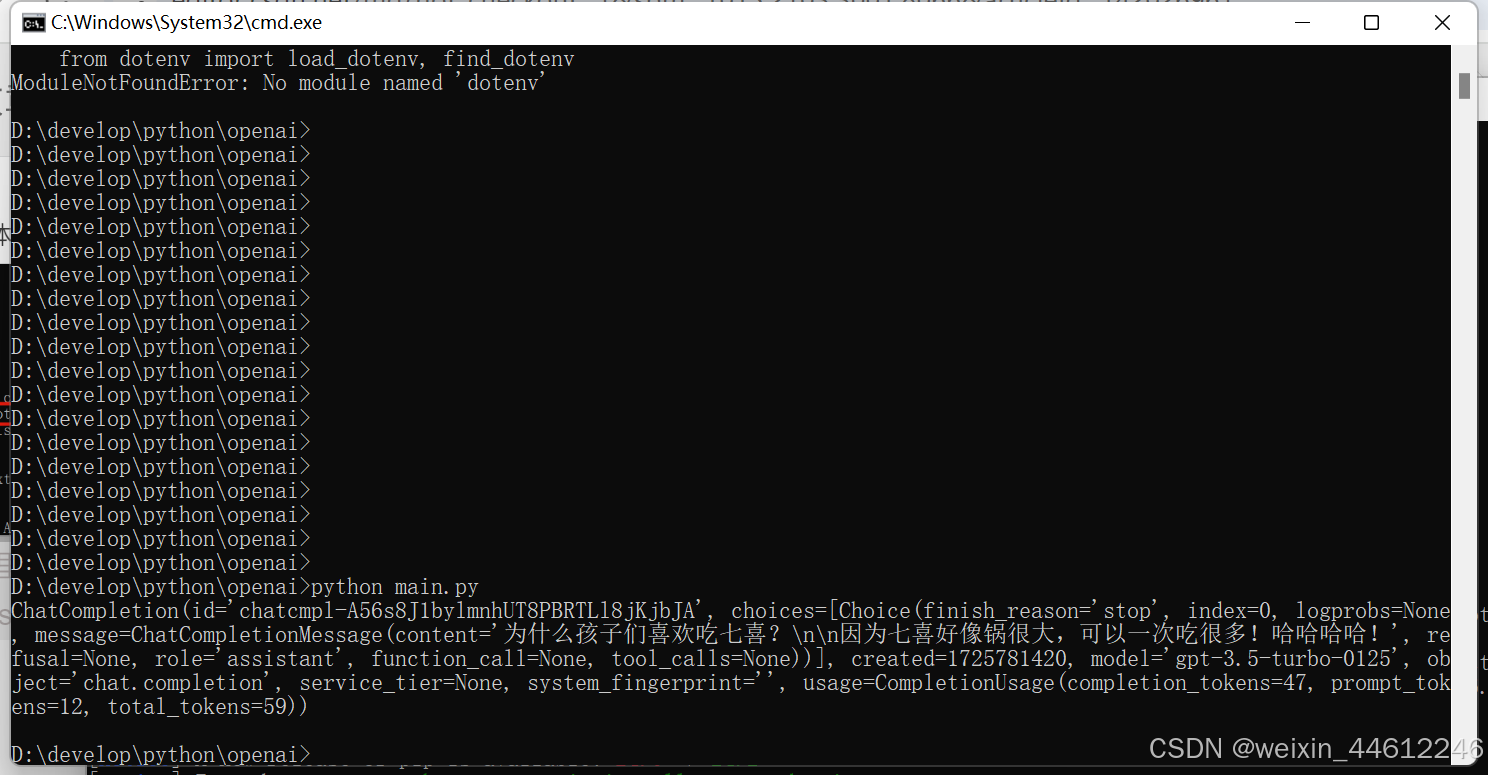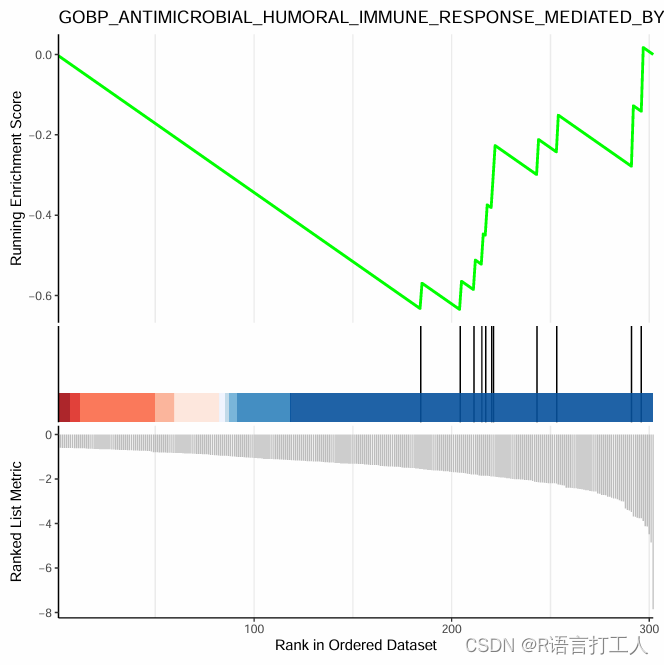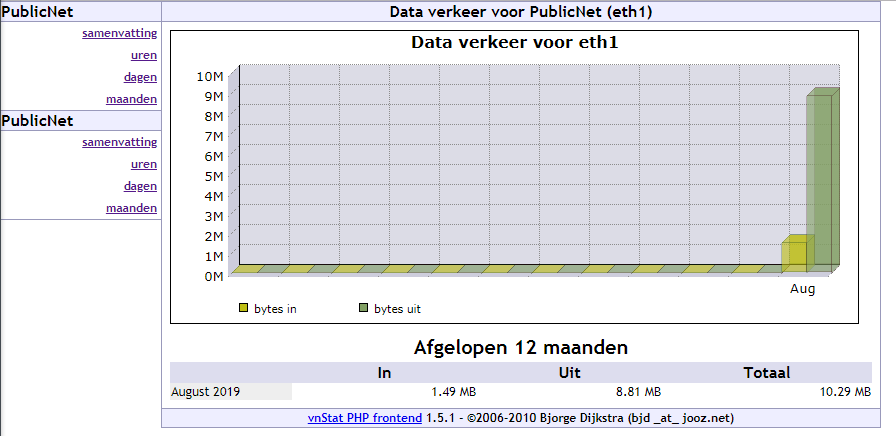Unveiling performance insights with PyTorch Profiler on an AMD GPU — ROCm Blogs

2024年5月29日,作者:Phillip Dang。
在机器学习领域,优化性能通常和改进模型架构一样重要。在本文中,我们将深入探讨 PyTorch Profiler,这是一款设计用于帮助深入了解我们 PyTorch 模型内部状态的便捷工具,能够揭示瓶颈和低效之处。本文将介绍 PyTorch Profiler 的基本工作原理以及如何在 AMD GPU + ROCm 系统中利用它来提高模型效率。
什么是 PyTorch Profiler?
PyTorch Profiler 是一个性能分析工具,使开发人员能够检查 PyTorch 模型训练和推理的各个方面。它允许用户收集和分析详细的分析信息,包括 GPU/CPU 利用率、内存使用情况以及模型内不同操作的执行时间。通过利用 PyTorch Profiler,开发人员可以获得关于其模型运行时行为的宝贵见解,并发现潜在的优化机会。
使用 PyTorch Profiler 非常简单,只需几个步骤:
1. 标注代码:要开始对 PyTorch 代码进行分析,您需要使用分析注释对其进行标注。这些注释指定了要分析的代码区域或操作。PyTorch Profiler 提供了上下文管理器和装饰器以便于标注。
2. 配置分析器设置:根据您的分析需求配置分析器设置。您可以指定参数,如详细程度、分析模式(例如 CPU, GPU)和输出格式。
3. 运行分析:在代码标注完成且分析器设置配置好后,像往常一样运行您的 PyTorch 代码。分析器将在执行期间收集性能数据。
4. 分析分析结果:执行后,使用 PyTorch Profiler 提供的可视化工具分析分析结果。探索时间线、火焰图和内存使用图,以识别性能瓶颈和优化机会。
5. 迭代和优化:利用从分析中获得的洞见来反复优化代码。根据分析数据进行有针对性的优化,并重新运行分析器以评估您更改的影响。

先决条件
要跟随本博客的内容,您需要以下软件:
- ROCm
- PyTorch
- Linux 操作系统
有关支持的 GPU 和操作系统的列表,请参阅此页面。为了方便和稳定,我们建议您直接在 Linux 系统中使用以下代码拉取并运行 rocm/pytorch Docker:
docker run -it --ipc=host --network=host --device=/dev/kfd --device=/dev/dri \--group-add video --cap-add=SYS_PTRACE --security-opt seccomp=unconfined \--name=olmo rocm/pytorch:rocm6.0_ubuntu20.04_py3.9_pytorch_2.1.1 /bin/bash检查您的硬件并确保系统识别到您的 GPU,请运行:
! rocm-smi --showproductname您的输出应如下所示:
================= ROCm System Management Interface ================
========================= Product Info ============================
GPU[0] : Card series: Instinct MI210
GPU[0] : Card model: 0x0c34
GPU[0] : Card vendor: Advanced Micro Devices, Inc. [AMD/ATI]
GPU[0] : Card SKU: D67301
===================================================================
===================== End of ROCm SMI Log =========================接下来,确保 PyTorch 检测到您的 GPU:
import torch
print(f"number of GPUs: {torch.cuda.device_count()}")
print([torch.cuda.get_device_name(i) for i in range(torch.cuda.device_count())])您的输出应如下所示:
number of GPUs: 1
['AMD Radeon Graphics']
检测你的代码
库
导入我们将使用的必要库和模块。
import torch
import torch.nn as nn
import torchvision
from torchvision import transforms
from torch.profiler import profile, record_function, ProfilerActivity模型
首先,我们创建一个非常简单的卷积神经网络模型进行分析。
class SimpleCNN(nn.Module):def __init__(self):super(SimpleCNN, self).__init__()self.conv1 = nn.Conv2d(3, 16, kernel_size=3, padding=1)self.conv2 = nn.Conv2d(16, 32, kernel_size=3, padding=1)self.fc1 = nn.Linear(32 * 8 * 8, 128)self.fc2 = nn.Linear(128, 10)def forward(self, x):x = torch.relu(self.conv1(x))x = torch.max_pool2d(x, kernel_size=2, stride=2)x = torch.relu(self.conv2(x))x = torch.max_pool2d(x, kernel_size=2, stride=2)x = x.view(-1, 32 * 8 * 8)x = torch.relu(self.fc1(x))x = self.fc2(x)return x数据
接下来,我们下载一个简单的数据集。
# Load CIFAR-10 dataset
transform = transforms.Compose([transforms.Resize((32, 32)),transforms.ToTensor(),transforms.Normalize((0.5, 0.5, 0.5), (0.5, 0.5, 0.5))
])
trainset = torchvision.datasets.CIFAR10(root='./data', train=True, download=True, transform=transform)训练循环
我们将创建一个简单的训练循环,包括前向传递和反向传递,并对其进行分析。为了本博客的目的,我们将分析模型在200个批次上的前向和反向传递,而不是遍历整个数据集。
# Function to train the model
def train(model, trainloader, criterion, optimizer, device, epochs=1):for epoch in range(epochs):for i, data in enumerate(trainloader, 0):inputs, labels = datainputs = inputs.to(device)labels = labels.to(device)optimizer.zero_grad()outputs = model(inputs)loss = criterion(outputs, labels)loss.backward()optimizer.step()# exit after 200 batches if i == 200:break此外,让我们编写一个实用函数,该函数负责设置优化器和损失函数,实例化模型,并运行实际的分析。
# utility function for running the profiler
def run_profiler(trainloader, model, profile_memory=False):device = 'cuda'model = model.to(device)criterion = nn.CrossEntropyLoss()optimizer = torch.optim.SGD(model.parameters(), lr=0.001, momentum=0.9)activities = [ProfilerActivity.CPU, ProfilerActivity.CUDA]with profile(activities=activities, record_shapes=True, profile_memory=profile_memory) as prof:with record_function("training"):train(model, trainloader, criterion, optimizer, device, epochs=1)if profile_memory == False:print(prof.key_averages().table(sort_by="cuda_time_total", row_limit=10))else:print(prof.key_averages().table(sort_by="self_cpu_memory_usage", row_limit=10))分析非常简单,只需用分析器上下文管理器包裹训练循环即可。

运行性能分析
有了模型训练循环和性能分析工具函数的实现后,我们可以使用 PyTorch Profiler 来分析执行时间和内存消耗。
执行时间性能分析
我们先来看看训练循环的执行时间。
model = SimpleCNN()
trainloader = torch.utils.data.DataLoader(trainset, batch_size=32, shuffle=True, num_workers=4)
run_profiler(trainloader, model)输出结果如下所示:
------------------------------------------------------- ------------ ------------ ------------ ------------ ------------ ------------ ------------ ------------ ------------ ------------ Name Self CPU % Self CPU CPU total % CPU total CPU time avg Self CUDA Self CUDA % CUDA total CUDA time avg # of Calls
------------------------------------------------------- ------------ ------------ ------------ ------------ ------------ ------------ ------------ ------------ ------------ ------------ training 23.76% 360.249ms 71.31% 1.081s 1.081s 0.000us 0.00% 68.837ms 68.837ms 1
autograd::engine::evaluate_function: ConvolutionBack... 0.15% 2.271ms 3.63% 55.037ms 136.908us 0.000us 0.00% 34.770ms 86.493us 402 aten::convolution_backward 2.34% 35.480ms 3.34% 50.615ms 125.908us 18.366ms 16.60% 34.770ms 86.493us 402 ConvolutionBackward0 0.14% 2.151ms 3.46% 52.431ms 130.425us 0.000us 0.00% 34.486ms 85.786us 402 autograd::engine::evaluate_function: AddmmBackward0 0.33% 4.960ms 7.98% 120.946ms 300.861us 0.000us 0.00% 16.764ms 41.701us 402 aten::copy_ 0.44% 6.674ms 2.08% 31.585ms 77.037us 15.762ms 14.25% 16.408ms 40.020us 410 aten::_to_copy 0.14% 2.079ms 2.31% 34.972ms 86.995us 0.000us 0.00% 16.306ms 40.562us 402 aten::sum 0.78% 11.818ms 0.93% 14.160ms 17.612us 14.723ms 13.31% 16.162ms 20.102us 804 aten::to 0.13% 2.031ms 2.36% 35.852ms 35.674us 0.000us 0.00% 15.783ms 15.704us 1005 CopyHostToDevice 0.00% 0.000us 0.00% 0.000us 0.000us 15.739ms 14.23% 15.739ms 39.152us 402
------------------------------------------------------- ------------ ------------ ------------ ------------ ------------ ------------ ------------ ------------ ------------ ------------
Self CPU time total: 1.516s
Self CUDA time total: 110.639ms注意 self cpu time 和 cpu time 之间的区别。根据[教程](PyTorch Profiler — PyTorch Tutorials 2.4.0+cu121 documentation),“操作符可以调用其它操作符,自身 cpu time 排除了在子操作符调用中花费的时间,而总的 cpu time 包括了这些时间。你可以选择通过其他指标排序,比如传递 sort_by="self_cpu_time_total" 到表格调用中来按自身 cpu time 排序。”
接下来,我们将卷积神经网络(CNN)简化为一个非常简单的线性层,再次运行性能分析。我们预计会看到 CUDA 总时间的显著减少。
class SimpleNet(nn.Module):def __init__(self):super(SimpleNet, self).__init__()self.fc1 = nn.Linear(3 * 32 * 32, 10)def forward(self, x):x = x.view(-1, 3 * 32 * 32)x = self.fc1(x)return xmodel = SimpleNet()
run_profiler(trainloader, model)以下是输出结果:
------------------------------------------------------- ------------ ------------ ------------ ------------ ------------ ------------ ------------ ------------ ------------ ------------ Name Self CPU % Self CPU CPU total % CPU total CPU time avg Self CUDA Self CUDA % CUDA total CUDA time avg # of Calls
------------------------------------------------------- ------------ ------------ ------------ ------------ ------------ ------------ ------------ ------------ ------------ ------------ training 23.91% 192.128ms 84.59% 679.785ms 679.785ms 0.000us 0.00% 39.361ms 39.361ms 1 aten::linear 0.10% 768.000us 1.57% 12.605ms 62.711us 0.000us 0.00% 16.955ms 84.353us 201 aten::addmm 0.99% 7.943ms 1.28% 10.247ms 50.980us 16.955ms 37.52% 16.955ms 84.353us 201
Cijk_Alik_Bljk_SB_MT64x64x32_MI32x32x2x1_SE_1LDSB0_A... 0.00% 0.000us 0.00% 0.000us 0.000us 15.556ms 34.42% 15.556ms 77.393us 201 aten::copy_ 0.25% 2.028ms 3.07% 24.636ms 60.980us 14.614ms 32.34% 14.614ms 36.173us 404 CopyHostToDevice 0.00% 0.000us 0.00% 0.000us 0.000us 14.608ms 32.32% 14.608ms 36.338us 402 aten::_to_copy 0.27% 2.130ms 3.50% 28.122ms 69.955us 0.000us 0.00% 14.554ms 36.204us 402 aten::to 0.31% 2.460ms 3.61% 28.972ms 28.771us 0.000us 0.00% 13.586ms 13.492us 1007 Optimizer.step#SGD.step 2.09% 16.809ms 2.94% 23.664ms 117.731us 0.000us 0.00% 5.557ms 27.647us 201 autograd::engine::evaluate_function: AddmmBackward0 0.28% 2.236ms 1.64% 13.185ms 65.597us 0.000us 0.00% 3.691ms 18.363us 201
------------------------------------------------------- ------------ ------------ ------------ ------------ ------------ ------------ ------------ ------------ ------------ ------------
Self CPU time total: 803.604ms
Self CUDA time total: 45.193ms正如预期的那样,CUDA 总时间显著减少(从 110.639ms 到 45.193ms)。
内存消耗性能分析
我们还可以分析在模型运算过程中分配或释放的张量所使用的内存量。
trainloader = torch.utils.data.DataLoader(trainset, batch_size=32, shuffle=True, num_workers=4)
model = SimpleCNN()
run_profiler(trainloader, model, profile_memory=True)输出表格如下所示:
------------------------------------------------------- ------------ ------------ ------------ ------------ ------------ ------------ ------------ ------------ ------------ ------------ ------------ ------------ ------------ ------------ Name Self CPU % Self CPU CPU total % CPU total CPU time avg Self CUDA Self CUDA % CUDA total CUDA time avg CPU Mem Self CPU Mem CUDA Mem Self CUDA Mem # of Calls
------------------------------------------------------- ------------ ------------ ------------ ------------ ------------ ------------ ------------ ------------ ------------ ------------ ------------ ------------ ------------ ------------
enumerate(DataLoader)#_MultiProcessingDataLoaderIter... 22.44% 224.849ms 22.74% 227.911ms 1.134ms 0.000us 0.00% 0.000us 0.000us 75.42 Mb 75.42 Mb 0 b 0 b 201 aten::empty 0.22% 2.204ms 0.22% 2.204ms 2.731us 0.000us 0.00% 0.000us 0.000us 390.64 Kb 390.64 Kb 3.79 Mb 3.79 Mb 807 aten::scalar_tensor 0.00% 9.000us 0.00% 9.000us 9.000us 0.000us 0.00% 0.000us 0.000us 8 b 8 b 0 b 0 b 1 aten::random_ 0.00% 25.000us 0.00% 25.000us 12.500us 0.000us 0.00% 0.000us 0.000us 0 b 0 b 0 b 0 b 2 aten::item 0.00% 9.000us 0.00% 13.000us 6.500us 0.000us 0.00% 0.000us 0.000us 0 b 0 b 0 b 0 b 2 aten::_local_scalar_dense 0.00% 4.000us 0.00% 4.000us 2.000us 0.000us 0.00% 0.000us 0.000us 0 b 0 b 0 b 0 b 2 aten::resize_ 0.00% 6.000us 0.00% 6.000us 0.002us 0.000us 0.00% 0.000us 0.000us 0 b 0 b 0 b 0 b 2615 aten::resolve_conj 0.00% 0.000us 0.00% 0.000us 0.000us 0.000us 0.00% 0.000us 0.000us 0 b 0 b 0 b 0 b 1 aten::resolve_neg 0.00% 0.000us 0.00% 0.000us 0.000us 0.000us 0.00% 0.000us 0.000us 0 b 0 b 0 b 0 b 1 aten::to 0.22% 2.206ms 3.73% 37.335ms 37.149us 0.000us 0.00% 14.821ms 14.747us 0 b 0 b 75.47 Mb 2.63 Mb 1005
------------------------------------------------------- ------------ ------------ ------------ ------------ ------------ ------------ ------------ ------------ ------------ ------------ ------------ ------------ ------------ ------------
Self CPU time total: 1.002s
Self CUDA time total: 109.871ms如果我们对数据加载器的内存消耗不满意,可以通过尝试各种策略来解决内存瓶颈。这些策略可能包括减少批次大小、简化模型架构或使用混合精度训练。让我们将批次大小从 32 减少到 4,然后再次运行性能分析:
trainloader = torch.utils.data.DataLoader(trainset, batch_size=4, shuffle=True, num_workers=4)
model = SimpleCNN()
run_profiler(trainloader, model, profile_memory=True)新的输出结果如下:
------------------------------------------------------- ------------ ------------ ------------ ------------ ------------ ------------ ------------ ------------ ------------ ------------ ------------ ------------ ------------ ------------ Name Self CPU % Self CPU CPU total % CPU total CPU time avg Self CUDA Self CUDA % CUDA total CUDA time avg CPU Mem Self CPU Mem CUDA Mem Self CUDA Mem # of Calls
------------------------------------------------------- ------------ ------------ ------------ ------------ ------------ ------------ ------------ ------------ ------------ ------------ ------------ ------------ ------------ ------------
enumerate(DataLoader)#_MultiProcessingDataLoaderIter... 13.45% 127.135ms 13.74% 129.910ms 646.318us 0.000us 0.00% 0.000us 0.000us 9.43 Mb 9.43 Mb 0 b 0 b 201 aten::empty 0.23% 2.193ms 0.23% 2.193ms 2.717us 0.000us 0.00% 0.000us 0.000us 390.64 Kb 390.64 Kb 3.87 Mb 3.87 Mb 807 aten::scalar_tensor 0.00% 9.000us 0.00% 9.000us 9.000us 0.000us 0.00% 0.000us 0.000us 8 b 8 b 0 b 0 b 1 aten::random_ 0.00% 22.000us 0.00% 22.000us 11.000us 0.000us 0.00% 0.000us 0.000us 0 b 0 b 0 b 0 b 2 aten::item 0.00% 6.000us 0.00% 10.000us 5.000us 0.000us 0.00% 0.000us 0.000us 0 b 0 b 0 b 0 b 2 aten::_local_scalar_dense 0.00% 4.000us 0.00% 4.000us 2.000us 0.000us 0.00% 0.000us 0.000us 0 b 0 b 0 b 0 b 2 aten::resize_ 0.00% 7.000us 0.00% 7.000us 0.003us 0.000us 0.00% 0.000us 0.000us 0 b 0 b 0 b 0 b 2615 aten::resolve_conj 0.00% 0.000us 0.00% 0.000us 0.000us 0.000us 0.00% 0.000us 0.000us 0 b 0 b 0 b 0 b 1 aten::resolve_neg 0.00% 0.000us 0.00% 0.000us 0.000us 0.000us 0.00% 0.000us 0.000us 0 b 0 b 0 b 0 b 1 aten::to 0.21% 2.013ms 2.86% 27.042ms 26.907us 0.000us 0.00% 5.850ms 5.821us 0 b 0 b 9.52 Mb 481.50 Kb 1005
------------------------------------------------------- ------------ ------------ ------------ ------------ ------------ ------------ ------------ ------------ ------------ ------------ ------------ ------------ ------------ ------------
Self CPU time total: 945.407ms
Self CUDA time total: 83.583ms在这里,我们显著减少了加载数据所需的 CPU 内存,从 75.42 MB 减少到 9.43 MB。
在这篇博客中,我们展示了通过分析内存性能和执行时间,我们可以有效地提高模型训练过程的效率。我们鼓励读者尝试不同的优化策略以获得最佳结果。


















